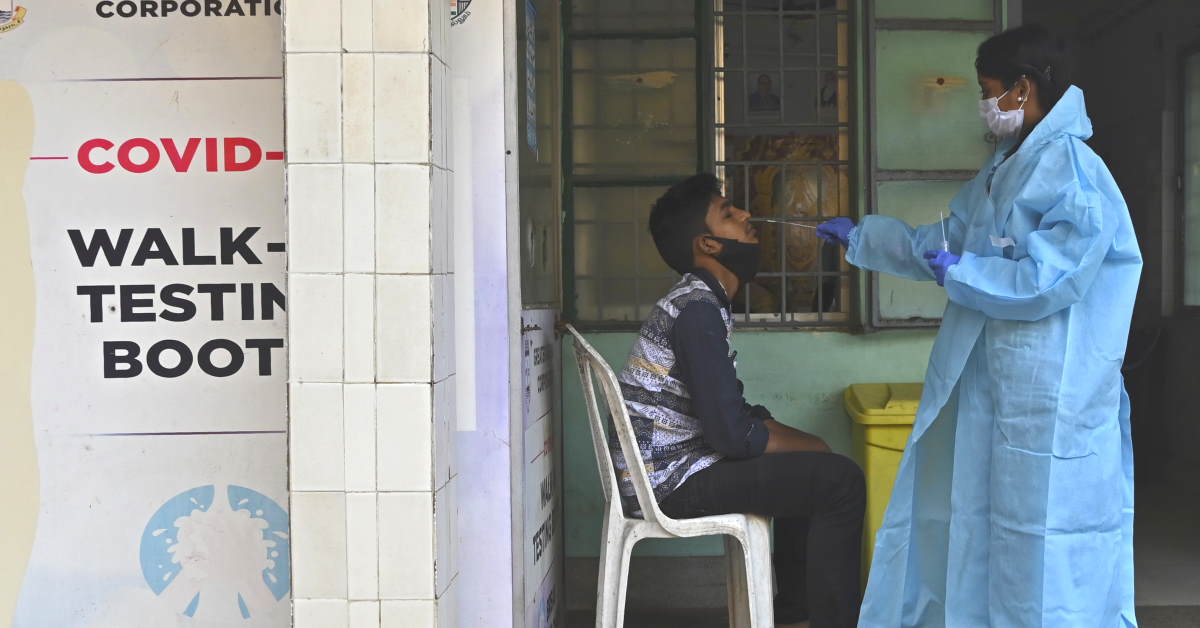India’s COVID-19 infections led by the Omicron variant may see a sharp rise in the coming weeks, some top experts say, noting that the variant is already in community transmission and hospitals are seeing more patients despite a decline in cases in major cities.
India on Monday reported 306,064 new infections over the last 24 hours, the health ministry said, about an eight percent decline from the average daily cases reported in the last four days. Deaths were 439, the lowest in five days.
But weekly positivity rates have risen to 17.03 percent in the week to 24 January, from about 0.63 percent on 27 December, led by the highly-transmissible Omicron variant.
“Omicron is now in community transmission in India and has become dominant in multiple metros,” a report by the Indian SARS-CoV-2 Genomics Consortium (INSACOG) said on 10 January in a report released on Sunday. Most cases of the Omicron variant have been mild, the advisory group said, although hospitalisations and cases in intensive care were increasing.
In the last two weeks major cities such as the capital, New Delhi, and financial hub Mumbai in the wealthiest state of Maharashtra, have been reporting big falls in cases after hitting peaks.
That might change, said Dr Subhash Salunke, a member of the state-run Indian Council of Medical Research and the national taskforce on COVID, as the variant is spreading to semi-urban and rural areas.
The western state expects to see multiple peaks in the next eight to 10 weeks, said Salunke, who previously advised the Maharashtra government.
“The number of cases in cities like Mumbai and Pune are the tip of the iceberg,” Salunke told Reuters news agency, adding that the deadly Delta variant from the previous wave was also circulating.
A government scientist warns it will take weeks before hospitalisations and deaths data will show how severe the latest wave will be. The federal authorities say Omicron is causing fewer hospitalisations and deaths than the Delta variant, which killed hundreds of thousands last year.
But Tarun Bhatnagar from the ICMR-National Institute of Epidemiology in Chennai said the effect of the current run-up in infections will show up with a lag.
“We have to worry about hospitalisation and deaths and that will come later,” he told Reuters news agency in a phone interview. “There will always be a lag of two-three weeks.” While infection rates have recently fallen in India’s big cities, experts say cases nationally could peak by the middle of next month.
About 70 percent of its 939 million adult population has received two primary vaccine doses and a booster campaign for health workers and at-risk population is under way.
But millions still await their first shot and Bhatnagar cited reports from some states that those unvaccinated or not fully vaccinated make up more than 90 percent of intensive care patients.
Warning Against Complacency
The surge is heightened mostly by the highly transmissible Omicron variant, but hospitalisations are low, with most people recovering at home. Federal and state health officials say a majority of the infections in the ongoing third wave have been mild, with fewer hospitalisations and deaths than the previous surge in April and May that killed hundreds of thousands of people.
The health ministry has said common pain relievers like paracetamol should be enough for people with mild fever due to COVID-19. It has warned, though, against complacency as infections have now started rising in as many as 300 districts from fewer than 80 a week ago.
“The experience from other countries informs us that it is more practical to track/monitor hospitalisations rather than new cases,” said Rajib Dasgupta, head of the Centre of Social Medicine and Community Health at New Delhi’s Jawaharlal Nehru University.
“Non-pharmaceutical interventions – lockdowns, etc. – are increasingly losing their relevance with rapid and inexorable community transmission.”
Keen to avoid another painful lockdown for millions of workers reliant on a few dollars in daily wages, authorities in different parts of India have sought to restrict gatherings.
In capital New Delhi, all bars, restaurants and private offices are shut and the capital is now in its second weekend curfew.
In the financial capital Mumbai, gatherings of more than four people are banned.
India’s tally of overall infections reached 39.54 million, the second-highest globally behind the United States (US). The country has seen 489,848 people die of the virus.
